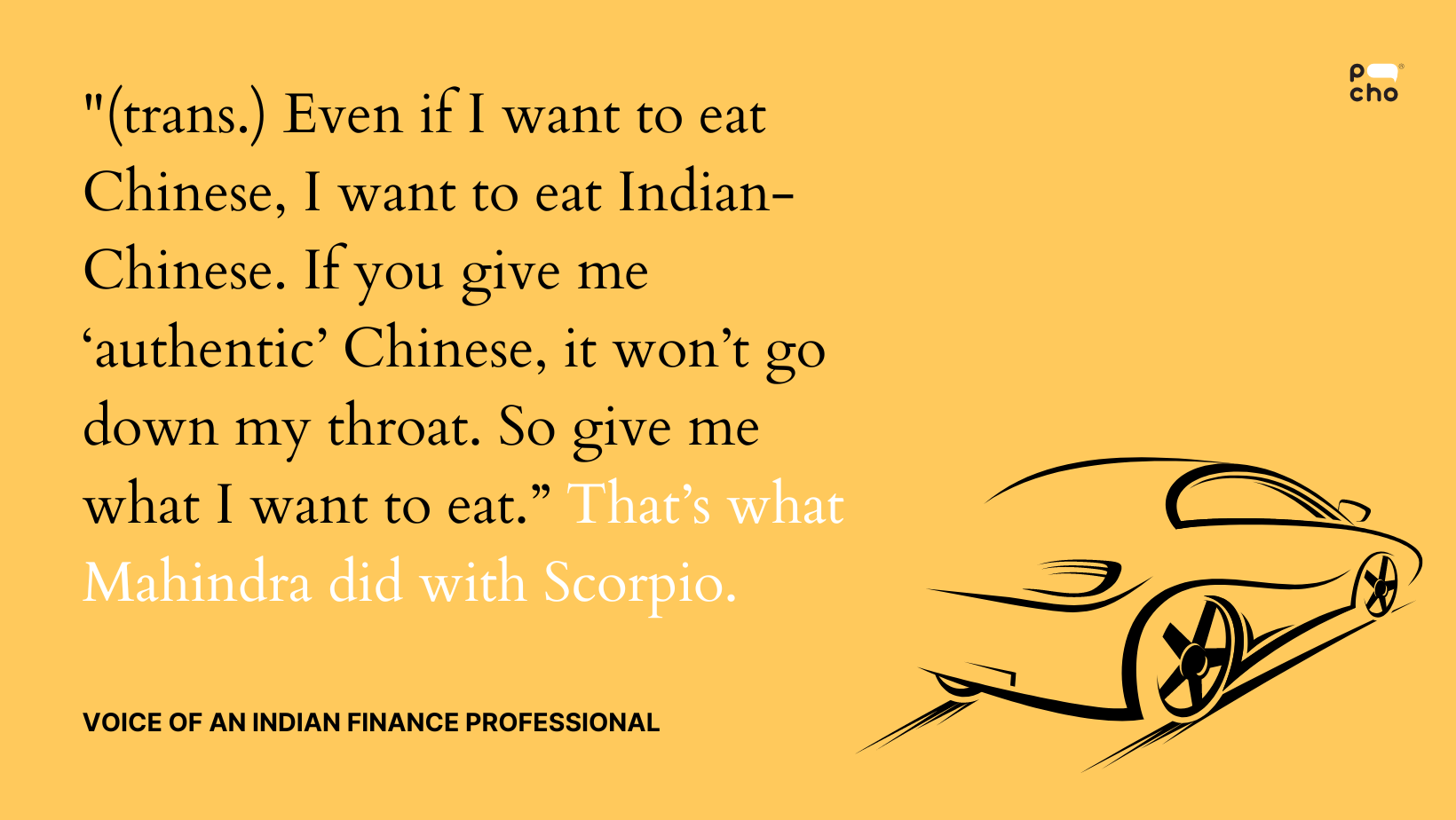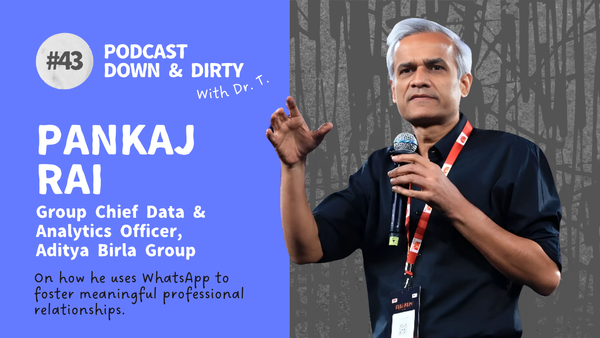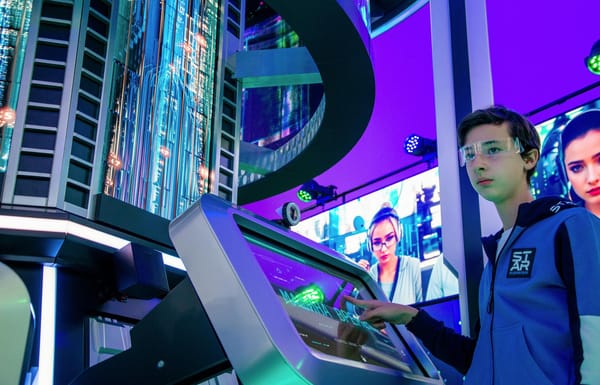💬How did Mahindra's Scorpio become India's favourite SUV?
Part-time angel investor, full-time car enthusiast, Prabhjot Singh Sodhi, tells us the story of India’s most iconic SUV and what brands can learn from it.

Written by: Swasti Acharya
India's automobile industry has only grown since the pandemic. In 2022, it sold more than 4M vehicles to become the third largest vehicle market. As new players enter the market and each segment diversifies in its range – luxury, EV, hybrid and more – Prabhjot Singh Sodhi*, Bombay-based finance-professional-cum-car-enthusiast unpacks the history of India’s iconic Mahindra Scorpio.
Poor roads, sturdy SUVs
A pre-independence steel trading company that is now a billion-dollar brand, Mahindra is an iconic homegrown automotive manufacturing company that has a stronghold across the Indian subcontinent and abroad. In fact, its most recent iteration of the SUV model Scorpio-N was launched in South Africa in January 2023 making Mahindra the fastest growing brand in the rainbow nation.
Since its birth in 2002 and after multiple facelifts, it has remained one of India’s best selling cars in the segment. But how did it get here?
For starters, country roads. Or lack there of. Designed originally for the rugged rural terrain like its bare-boned predecessor – Bolero, the Scorpio’s stylish exterior and cushioned interior managed to carve its spot in the sleek aesthetic of early 2000s urban India. It’s big enough to fit a family, cool enough for the masculine youth, and sturdy for potholed roads. Naturally, ‘nothing else will do’.
All about headlights
In all its design iterations, Scorpio maintained its recognisable bold front beam. “Till 2021 the lights of the Scorpio front lights were not changed because the customers really liked it. Only after 20... maybe 25 years they have changed it,” recalls Prabhjot Singh.*
Now in his late 40s with two kids and a wife, Singh remembers his younger days when the car had just launched and the craze was undying. Way before Toyota’s Fortuner had caught the attention of young men in the country, Manhindra’s Scorpio was the car his friends aspired to own. Car enthusiasts were impressed by its engine performance, bystanders with its robust appearance, and breadwinners with its price point.
An angel investor today, Singh’s advice is taken from Scorpio’s longstanding success. He says, “A company has to know that one, ‘Mere abhi ke menu mein kya sabse zyaada chal raha hai aur usko main chhedoon na. Aur mere purane menu mein aisa kya tha, jisko meine chhed diya toh mera 20% revenue kam ho gaya.’ [Trans.: ‘I shouldn’t mess with what’s currently working for my business model. And two, what is it that was working previously but reduced my revenue by 20% because we messed with it?]”
The funda is simple: brands in the Indian market, or any market for that matter, must pivot according to their consumers’ psyche and sentiment as it concerns their core value prop. It’s a lot like eating. Singh says most Indians don't like ‘authentic’ international cuisine. Why? Because it’s not palatable to the taste buds of the Indian masses.
“Mujhe Chinese bhi khana hai toh mujhe Indian type ka Chinese khana hai. Aap mujhe authentic Chinese doge toh mere gale ke neeche nahi utrega. Toh aap mujhe woh khilao jo mujhe khana hai."
[Trans.: Even if I want to eat Chinese, I want to eat Indian-Chinese. If you give me ‘authentic’ Chinese, it won’t go down my throat. So give me what I want to eat.]”
That’s what Mahindra did with Scorpio. Having experienced manufacturing automotive parts in collaboration with international clients like Jeep, Mitsubishi, and Renault, the Indian SUV retained crucial aspects of its appeal that eventually resonated in Italy and Phillipines too.
Keeping up with the EVs
Even as Mahindra rebranded its twin-peaks logo, the latest Scorpio N retained its visual identity through its wide-eyed headlights and grille. Unlike the Creta and Seltos, its contemporary soft roaders, Mahindra's Scorpio packs a punch in its ladder-on-frame chassis. What’s more is that it’s also one of the most affordable SUVs to incorporate a 4x4 drivetrain that adventurers love.
While the company has only launched an all-electric version of its XUV, its rival Tata Motors might just get a first-mover advantage in the eSUV segment with Nexon and Harrier.
But as Singh says, “When you have a product which is a hit, why do you want to change it?”
*We anonymize participant names to protect their identities and encourage more honest dialogue.



